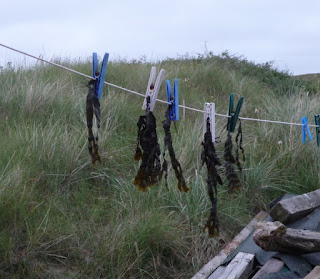Every year we come across the occasional injured seals from time to time. Where possible we do our best to help them. Already this season we have helped two seals that were caught in netting and fishing lines. Yesterday, there was a Common Seal pup suffering from lungworm on Far Point.
We used a seal stretcher to catch the pup. It was then taken to the RSPCA animal hospital at East Winch where they specialise in seals. We hope it will make a full recovery, and will keep you updated.
Above photos: Graham Lubbock

Photo: Joe Cockram
A small number of migrant birds have been sighted over the last few days: a Purple Sandpiper, female Tufted Duck and Wheatear were seen on Sunday, three Curlew Sandpipers and two juvenile Stonechats on Monday, and a Common Whitethroat today.
- Ajay














































